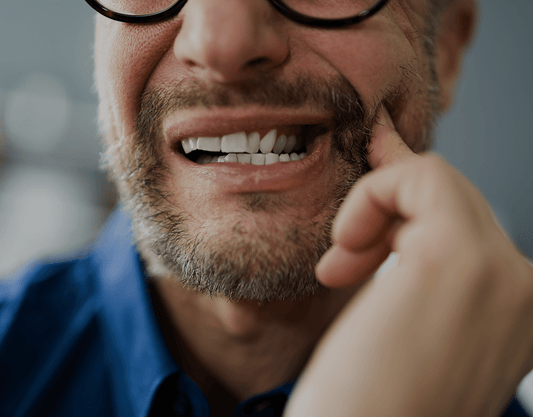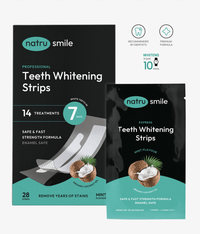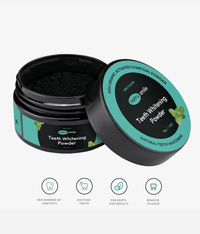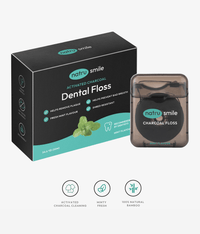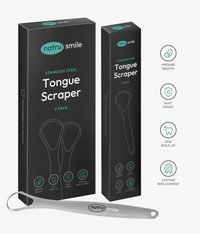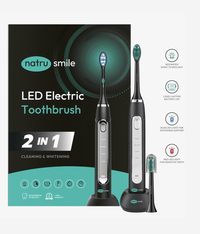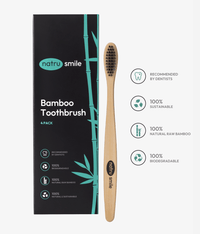
All products are certified by dental expert Dr. Greg Grillo
Teeth whitening zingers are a hot topic for those who enjoy both at-home teeth whitening and in-office teeth whitening.
Defined as the temporary tooth sensitivity that can be triggered shortly after undergoing teeth whitening, zingers are those sharp shooting pains that extend outwards from your tooth to your gums. Because they often feel like quick “zaps” of pain, they’ve earned the nickname of zingers.
But what causes teeth whitening zingers, and how can you get rid of them? Let’s dive in.
What Causes Teeth Whitening Zingers?
Before we explore what triggers zingers after teeth whitening, let’s first explain the processes of both at-home and in-office teeth whitening.
Firstly, home teeth whitening kits often take the form of a gel or paste that is applied to your teeth via a pen, brush, strip, or tray. Although most involve coating your teeth with an over-counter whitening agent, some teeth whitening kits include a heat lamp, blue light, or UV light to “radiate” the whitening gel.
Since the active ingredients in these at-home whitening tools are at a lower concentration than professional whitening ingredients, they require consistent use in order to maintain these results. When used too frequently or for too long per-session, zingers can show themselves.
When it comes to whitening at a dentist’s office, you’ll experience higher concentrations of the active ingredients in whitening agents–meaning better results, faster. However, zingers–especially Zoom whitening zingers, as Zoom is one of the most popular professional teeth whitening options currently on the market– tend to be more frequent and more painful during professional whitening's due to these extra-strength ingredients.
The most common side effect of teeth whitening is temporary tooth sensitivity. Mouth and gum irritation is also common due to the levels of hydrogen peroxide used.
When you get your teeth whitened at the dentist’s office, your gum tissue will be protected during the treatment to reduce this side effect; however, zingers can occur post-teeth whitening when consuming hot or cold food and drinks. Getting your teeth whitened repeatedly or using tooth whitening kits for longer than the recommended duration can result in permanent damage to your tooth enamel, resulting in zingers that linger or are more painful.
How Long Do Zingers Last After Teeth Whitening?
Tooth zingers typically last for a few seconds at a time. These can occur during the whitening procedure and may last for a day or two after treatment. Within those two days, your teeth will rebuild the minerals that the hydrogen peroxide stripped and heal itself back to its normal, non-sensitive states.
In the meantime, please be advised that zingers are completely normal–even though they do deliver a nasty shock to the system!
How Do You Prevent Zingers After Teeth Whitening?
Luckily, there are steps you can take to mitigate both the amount and duration of teeth whitening pain zingers.
These steps include:
- Avoiding drinking or eating anything acidic or abrasive in nature. These include soda, acidic fruit like lemons or oranges, raw vegetables, and salty potato chips.
- Mitigating the amount of very hot or very cold food and drinks that are consumed, as they can trigger temperature-related sensitivity.
- Opting for both toothpaste and mouthwash that is specifically formulated for sensitive teeth, which should be used both before and after your whitening sessions.
- Taking an over-the-counter pain reliever before whitening your teeth
- Using a post-treatment relief gel, which can be bought either over-the-counter or asked for at your dentist’s office.
- Choosing a soft-bristled toothbrush
- Consulting a dental professional immediately if your zingers last longer than 48 hours, as they can set up a consultation and determine better preventative measures for future teeth whitening sessions.
If you find that your whitening zingers are becoming more intense or lasting for longer after every session, it’s recommended to dial back on how frequently you are whitening your teeth–regardless of if it’s at-home or in-office.
Now that we’ve discussed the foundation of zingers after teeth whitening, let’s move on to some of the frequently-asked questions surrounding the topic.
Are Zingers Normal After Teeth Whitening?
Yes, zingers are normal after teeth whitening, regardless of if you’re having it done by a dentist or via at-home teeth whitening.
To avoid zingers after teeth whitening, it’s recommended to opt for a natural teeth whitener like activated charcoal instead to remove hydrogen peroxide from the equation.
What Causes Zingers In Teeth Generally?
While zingers are directly associated with teeth whitening, there are a variety of reasons why tooth sensitivity can rear its painful head.
The most common of these reasons are:
- Tooth Decay: When a tooth starts to decay, its enamel is broken, allowing bacteria to penetrate and start to eat away at it. If a cavity goes deep enough, it can penetrate not only the dentin but also the root of the tooth, which causes deep sensitivity
- Receding Gums: If the gums recede, the root of the tooth, which does not have a hard enamel coating, is exposed to a variety of sensitivity-triggering conditions. Gum recession can be triggered by gum disease, over-aggressive brushing, or from consistently using a hard-bristled toothbrush
- Cracked or Broken Teeth: While even a small crack or break in the teeth may be invisible to the naked eye, these fissures expose the dentin of the tooth to warm or cool foods, sensitivity while biting down, and even hot or cold air
- Teeth Grinding: People who grind their teeth in their sleep or clench their teeth not only run the risk of wearing down their tooth enamel, which then exposes the tooth’s softer dentin to temperature and abrasive substances, but also of cracking or breaking their teeth
Going in for periodic professional cleanings is the best way to both prevent and treat oral sensitivity of all kinds.
What Do Teeth Zingers Feel Like?
Zingers are sudden, sharp “zaps” in a tooth or in multiple teeth that some people may experience after tooth whitening.
Zingers usually last for a few seconds at a time. While they are most frequently felt up for two days post-whitening, tooth zingers can occur during the whitening procedure as well depending on your level of sensitivity. This happens because whitening gels temporarily make your tooth enamel more permeable, exposing the soft dentin layer that contains the nerves in your teeth.
The Bottom Line
Here at NatruSmile, we value education–and that means keeping you educated on common concerns like teeth whitening, general tooth sensitivity, and, of course, zingers after teeth whitening.
While myriad zinger remedies exist, we believe that prevention is the best treatment. That includes understanding your personal dental sensitivity levels, taking the preventative measures that you deem necessary both before and after your teeth whitening treatments, and not being afraid to reach out for a professional opinion when it’s needed.
If you’ve tried teeth whitening, have you experienced teeth whitening zingers? What method was it from, and how did you end up circumventing it?

